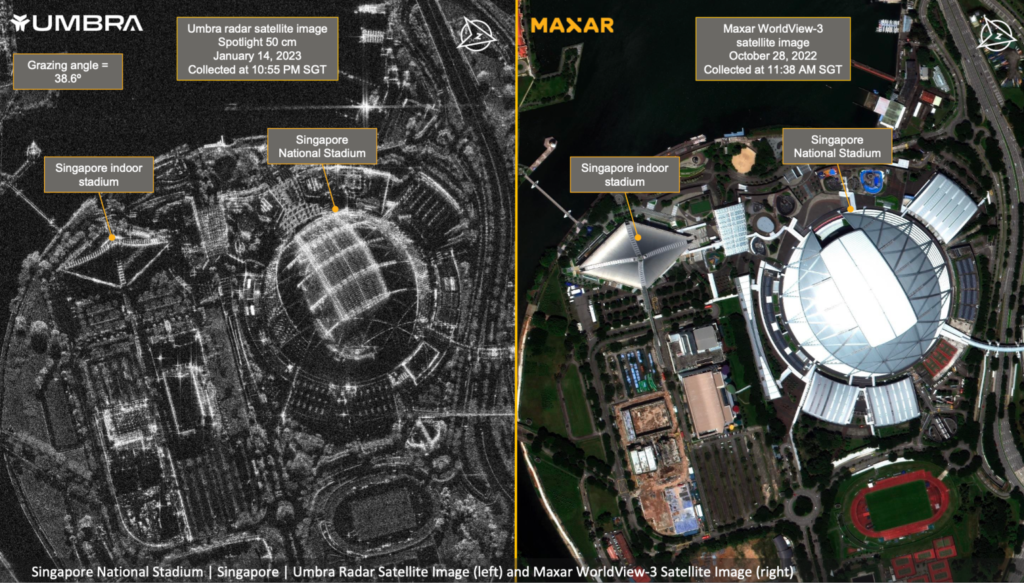
The new offering
Umbra Space claims to operate the world’s most capable Synthetic Aperture Radar (SAR) satellites, and they announced in a press release on July 31, 2024, that they were launching a new business line “focused on delivering fully operational satellite missions to customers looking for their own orbital SAR capabilities.”1 Umbra has established itself as a leader in SAR technology through vertical integration of its supply chain, but the new goal appears to be not just operating those satellites, but offering a full-service relationship to customers as well. These business solutions are available in a range of responsibility-sharing arrangements, ranging from “full handoff to customers, customer owned and Umbra operated, and Umbra owned and operated” models to address multiple tiers of potential customers.
Why is SAR so valuable?
SAR satellites offer some advantages over traditional optical Earth Observation (EO) satellites that would make such an integrated solution highly attractive. At the most basic level, for a given electromagnetic wavelength, the wider the aperture (or length of the receiving antenna), the greater spatial resolution can be achieved.2 The greater the spatial resolution, the greater objects on Earth are able to be distinguished at smaller and smaller scales, making such imagery increasingly valuable to customers (and adversaries). As can be seen in the imagery above, while the result may not be in color, it does offer a spectacular level of detail. Unlike traditional optical telescopes, SAR satellites have the ability to see through cloud cover, making them less dependent on light-dark cycles or weather patterns.
Cyber implications
This is not the first time that Umbra Space has significantly pushed the bounds of making ultra-high quality SAR imagery publicly available. Just over a year ago, in July 2023, they announced that they had just made more than $1 million worth of SAR imagery publicly available via its Open Data Program.3 In the same press release announcing this offering, Umbra’s co-founder and president Gabe Dominocielo acknowledged that “Historically, sub-50cm resolution data was restricted to the defense market…I’m excited to enable free access to the highest-resolution commercial SAR data.”
This is not a particularly new phenomenon, as the lines between commercial and military EO imagery capabilities have blurred significantly over the past decade with the rise of Planet Labs, Maxar, BlackSky, Spire, and others. On the one hand, this does drive down the economic incentive for adversaries to hack into those large exquisite imagery satellites of old–is it even worth the effort for a marginal improvement in resolution, if any? On the much more nefarious side, however, this may help adversaries to become much more targeted in cyber attacks to exfiltrate customer data, or perhaps execute denial of service. Providing an integrated solution consolidates the target in one place–at once providing a smoother experience for the customer and the potential intruder. This makes it particularly important for customer data to be properly segmented, because the incentive to break into the system would become irresistible if it offered the opportunity for lateral movement between customer accounts.
While it also seems on the surface to solve some interoperability and standards-based issues, it is still worth highlighting the tiered partnership structures that are planned to be offered under this business line. Even though Umbra promises a complete package, they are still offering structures where the satellite part of the “solution” is still fully or partially operated by the customer. Umbra is bringing new players into the fold, not only in the space segment, but presumably in the link and ground segment as well. This can be a capability multiplier, but also increases the attack surface area. Creating a system-of-systems makes the risk associated with this surface area greater than the sum of its parts–and with valuable data like high-quality SAR, hopefully cybersecurity takes a front seat.
Sources
- Press Release, “Umbra offers the world’s most capable SAR satellites to customers,” Umbra Space, 31 July 2024, https://umbra.space/blog/umbra-offers-the-worlds-most-capable-sar-satellites-to-customers/, accessed 04 August 2024. ↩︎
- Website, “What is Synthetic Aperture Radar?,” NASA EarthData, https://www.earthdata.nasa.gov/learn/backgrounders/what-is-sar, accessed 04 August 2024. ↩︎
- Press Release, “Umbra Releases Over $1 Million of Free SAR Data,” Umbra Space, 27 July 2023, https://www.prnewswire.com/news-releases/umbra-releases-over-1-million-of-free-sar-data-301887643.html, accessed 04 August 2024. ↩︎